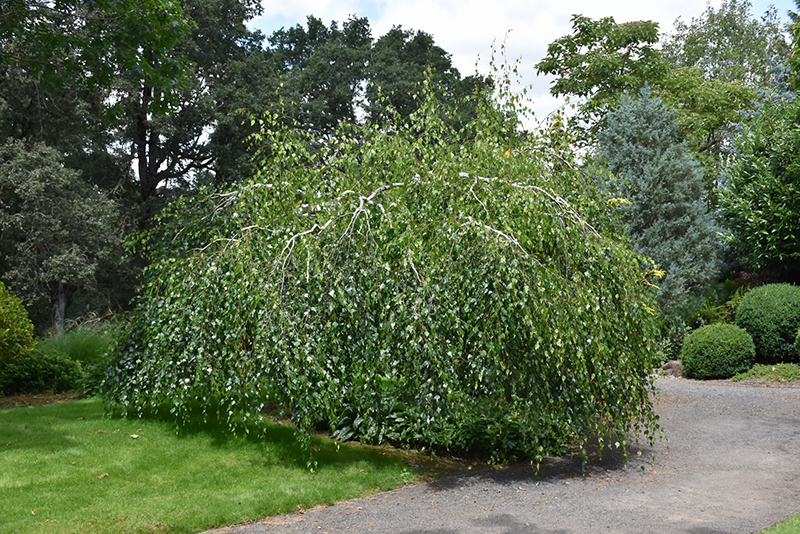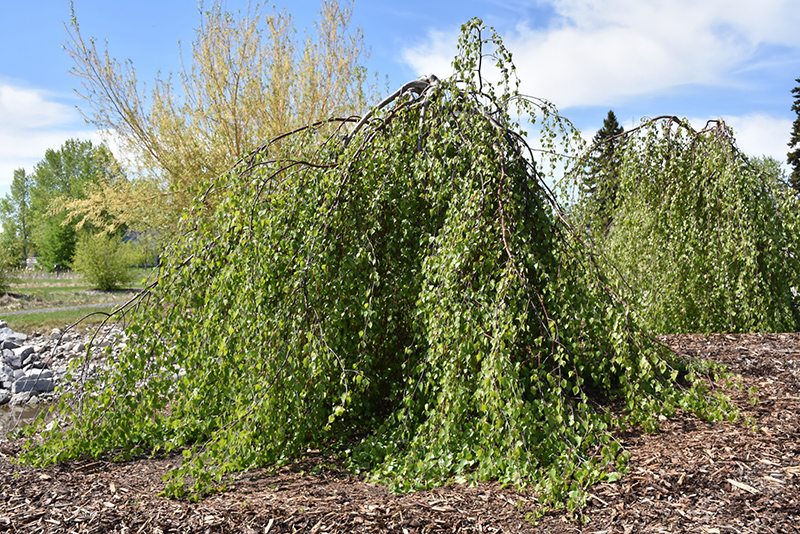Birch, Youngii Weeping Betula pendula 'Youngii' Height: 12 feet Spread: 12 feet
Sunlight:
Hardiness Zone: 2a Other Names: Silver Birch, Common Birch Description: A truly distinctive plant, they are serpentine (staked and trained from a very young age), weeping growth habit; not for every landscape or person but putty in the hands of a creative garden designer, often used as a focal point. Ornamental Features Birch, Youngii Weeping is primarily valued in the landscape or garden for its highly ornamental weeping form. It has dark green deciduous foliage. The pointy leaves turn an outstanding yellow in the fall. However, the fruit can be messy in the landscape and may require occasional clean-up. Landscape Attributes Birch, Youngii Weeping is an open deciduous tree with a strong central leader and a rounded form and gracefully weeping branches. Its relatively fine texture sets it apart from other landscape plants with less refined foliage. This tree will require occasional maintenance and upkeep, and is best pruned in late winter once the threat of extreme cold has passed. Gardeners should be aware of the following characteristic(s) that may warrant special consideration; Birch, Youngii Weeping is recommended for the following landscape applications; Planting & Growing Birch, Youngii Weeping will grow to be about 12 feet tall at maturity, with a spread of 12 feet. It has a low canopy with a typical clearance of 1 foot from the ground, and is suitable for planting under power lines. It grows at a slow rate, and under ideal conditions can be expected to live for approximately 30 years. This tree does best in full sun to partial shade. It is quite adaptable, prefering to grow in average to wet conditions, and will even tolerate some standing water. This plant should be periodically fertilized throughout the active growing season with a specially-formulated acidic fertilizer. It is not particular as to soil type or pH. It is somewhat tolerant of urban pollution. This is a selected variety of a species not originally from North America. Special Attributes Early Spring 1 1/2 to 2 inch catkins appear and releases tiny seeds during summer and fall. Birch are susceptible to the Birch Borer when the tree is stressed or if the neighborhood is active with borers. ![]()
![]()
![]()
![]()
![]()
![]()
![]()
![]()
![]()
![]()
![]()


